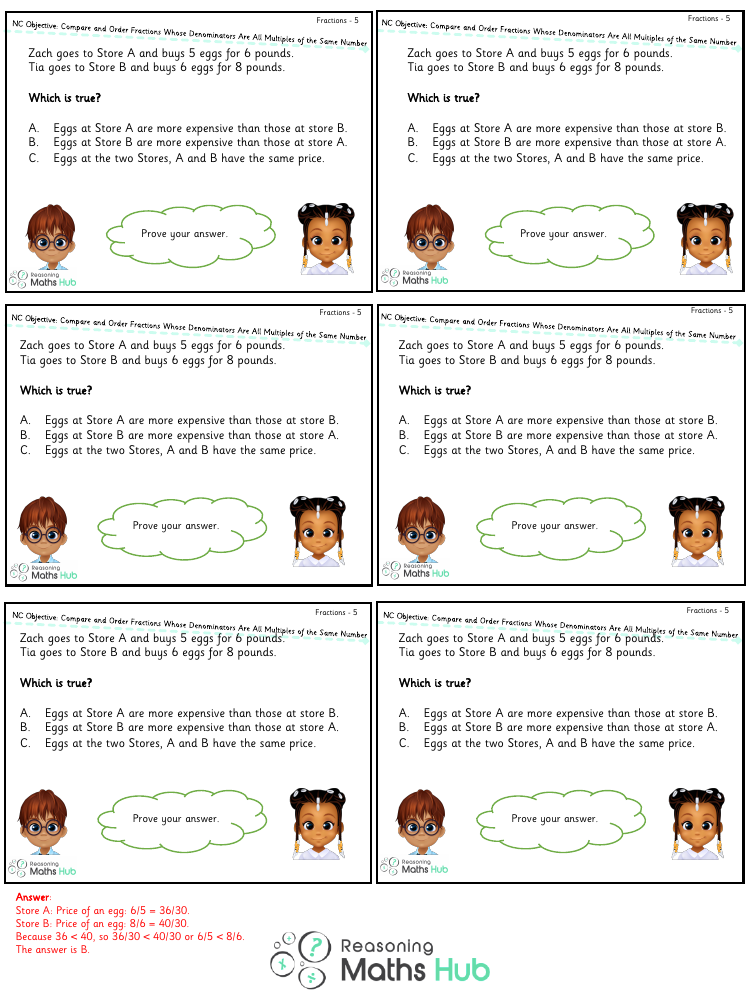Compare and Order Fractions Whose Denominators Are All Multiples of the Same Number 5 - Reasoning

Maths Resource Description
In a mathematical scenario involving the comparison of fractions to determine the better value for money when buying eggs, we encounter two stores with different pricing strategies. To ascertain which store offers the more economical option, one must compare the prices per egg. At Store A, the price per egg is represented by the fraction 6/5, which when expressed with a common denominator of 30, becomes 36/30. On the other hand, Store B's price per egg is given as 8/6, which is equivalent to 40/30 when adjusted to the same denominator. A comparison of these two prices reveals that 36/30 is less than 40/30, indicating that 6/5 is less than 8/6. Therefore, it can be deduced that Store A offers the cheaper price per egg.
To further validate this conclusion, one can examine the actual transactions made by two individuals, Zach and Tia, at these respective stores. Zach purchases 5 eggs for 6 pounds at Store A, while Tia acquires 6 eggs for 8 pounds at Store B. By calculating the cost per egg, we find that Zach pays 6 pounds for 5 eggs, which translates to 1.2 pounds per egg. Tia, on the other hand, pays 8 pounds for 6 eggs, amounting to approximately 1.33 pounds per egg. Comparing these two figures confirms that the price per egg at Store A is indeed lower than that at Store B. Consequently, the correct statement is B: Eggs at Store B are more expensive than those at store A. This conclusion is supported by the calculated cost per egg at each store, solidifying the assertion that Store B's eggs are priced higher than Store A's.
